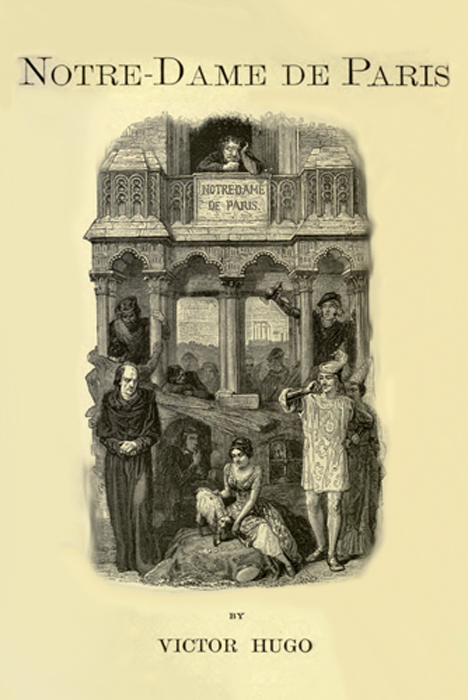eBook
English language
Published Nov. 13, 2009 by Independently Published.

eBook
English language
Published Nov. 13, 2009 by Independently Published.
The Hunchback of Notre-Dame (French: Notre-Dame de Paris, lit. 'Our Lady of Paris', originally titled Notre-Dame de Paris. 1482) is a French Gothic novel by Victor Hugo, published in 1831. It details the story of Quasimodo, the disabled bell-ringer of Notre-Dame, as he struggles to stand up to his ableist guardian Claude Frollo, who also wants to commit genocide against Paris' Romani population.
The novel has been described as a key text in French literature[1] and has been adapted for film over a dozen times, in addition to numerous television and stage adaptations, such as a 1923 silent film with Lon Chaney, a 1939 sound film with Charles Laughton, and a 1996 Disney animated film with Tom Hulce (both as Quasimodo).
The novel sought to preserve values of French culture in a time period of great change, which resulted in the destruction of many French Gothic structures. The …
The Hunchback of Notre-Dame (French: Notre-Dame de Paris, lit. 'Our Lady of Paris', originally titled Notre-Dame de Paris. 1482) is a French Gothic novel by Victor Hugo, published in 1831. It details the story of Quasimodo, the disabled bell-ringer of Notre-Dame, as he struggles to stand up to his ableist guardian Claude Frollo, who also wants to commit genocide against Paris' Romani population.
The novel has been described as a key text in French literature[1] and has been adapted for film over a dozen times, in addition to numerous television and stage adaptations, such as a 1923 silent film with Lon Chaney, a 1939 sound film with Charles Laughton, and a 1996 Disney animated film with Tom Hulce (both as Quasimodo).
The novel sought to preserve values of French culture in a time period of great change, which resulted in the destruction of many French Gothic structures. The novel made Notre-Dame de Paris a national icon and served as a catalyst for renewed interest in the restoration of Gothic form.[2]